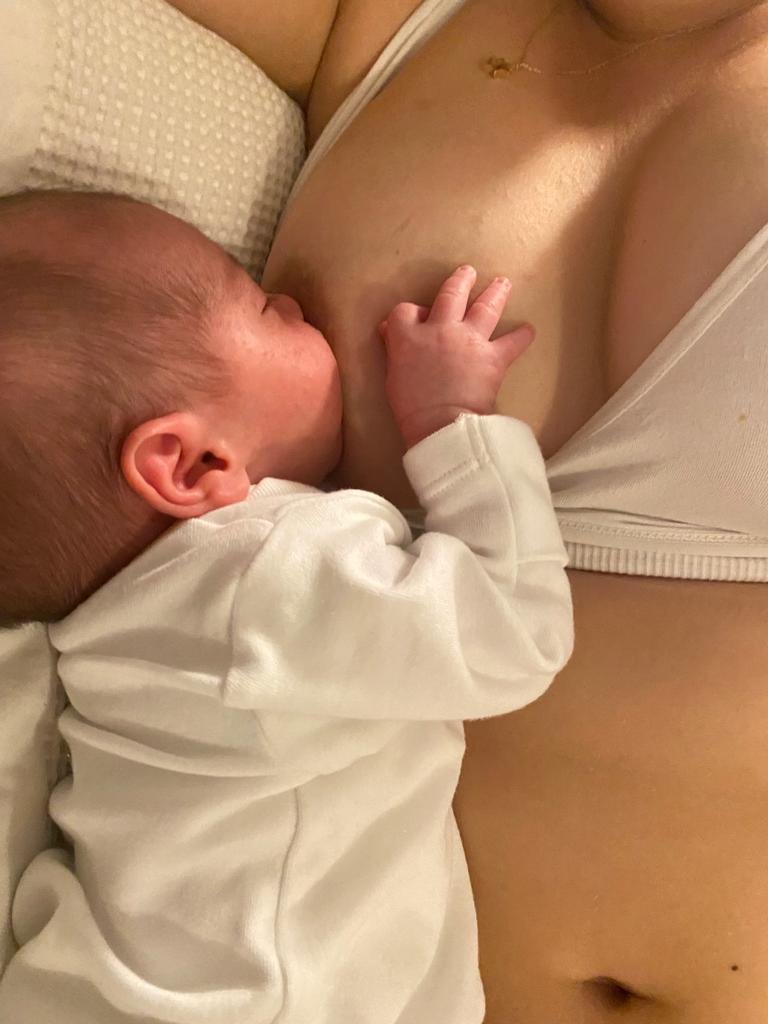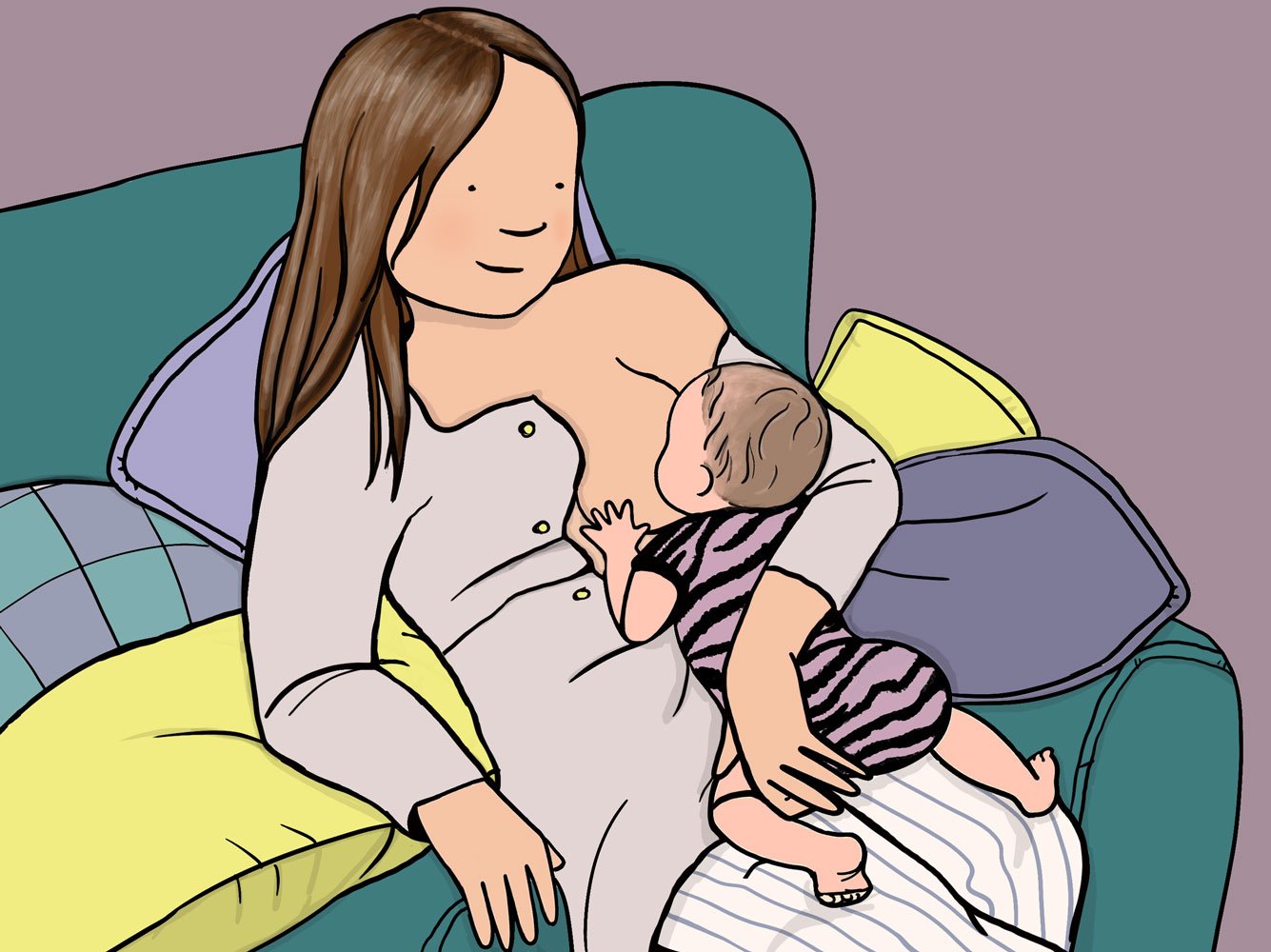Breastfeeding positions
There is no one position to use to breastfeed your baby. What works well for one breastfeeding mother and baby may not work for another. What worked with a previous baby may not work for your next one. In addition, you may find some positions work better for you at different stages of your breastfeeding journey and for different times of the day or night.
The aim of this blog is to share some examples of the less commonly known breastfeeding positions with tips for how to achieve them as well as times/circumstances when you may find them more useful.
Breastfeeding Position: The Koala/Straddle hold
When can I use the Koala/Straddle hold?
If your baby is struggling to stay on the breast
If your baby doesn’t open their mouth very wide
If you think your baby may have a tongue tie
If your baby has reflux
If you have oversupply or fast let down
What is the best way to achieve the Koala/Straddle hold breastfeeding position?
Sit upright on the edge of a chair and straddle your baby over your leg
Hold your baby with your hand in c-shape supporting the back of their neck but make sure nothing is touching their head. You can use the rest of your hand to support your baby’s back
Tuck your baby very close to your body. They should be looking up at the breast
Your baby’s chin should touch the breast. This will trigger them to open their mouth wide. As they do this, you can guide them into the breast
You can use the exaggerated latch and sandwich hold in this position if your baby needs extra help
Once your baby is latched you can put cushions behind you and remain upright and/or if you baby can maintain their latch you can lean back into the laid-back breastfeeding position
Additional tips
As your baby grows you will likely need to alter your position.
You can either: Extend your leg which will lower the baby ensuring they remain in a good position for latching OR sit them on the opposite knee and latch them diagonally across the body.
Breastfeeding Position: The Side-lying breastfeeding position
When can I use the side-lying breastfeeding position?
If you have had a Caesarean section or episiotomy.
If you want to relax and rest while you are feeding. You can also co-sleep and feed in this position at night. If you do then remove the rolled-up towel shown in the image so that your baby can lie on their back safely. If you are co-sleeping then please follow the @lullabytrust guidance for safe co-sleeping.
If your back, neck and shoulders are sore. Placing a cushion between your knees when in this position can also help with any pain.
If you have large breasts
If your baby has reflux. Place your baby on their left side. Left side-lying has been shown to help reduce episodes of reflux.
What is the best way to achieve the side-lying breastfeeding position?
Like with all breastfeeding positions, your baby should be close to your body, in a straight line with its head free to move back so that they can latch. Line your baby up nose in line with nipple with their chin touching the breast. As they open their mouth with a wide gape you can gently guide them further into your body /breast if needed.
Additional tips
Your baby should be comfortably on their side and you can help them to stay in position by rolling up a towel and placing it behind their back.
Your arm and hand can also support them to stay on their side and remain close to your body.
Breastfeeding Position: The Laid back /biological nurturing position
When can I use the laid back/biological nurturing position?
If your baby has a shallow latch
If your baby has a tongue tie
If you have an oversupply
If you have a fast let down
If your baby has reflux
If you have aches and pains from traditional breastfeeding positions
If you are feeding an older baby or child
How to breastfeed using the laid back/biological nurturing position?
Recline into a comfortable position, you don’t need to be lying down flat
Have cushions available to support your arms/elbows on either side
Place your baby on your chest
You can use your arms on either side of your baby to keep them centred and heading towards the nipple and stop them rolling off you
You can use your hand to lift and/or shape the breast if needed to make the areola easily accessible for your baby
You may also find you need to lift a small baby in order get their chin touching and resting on the breast which in turn will support them to latch
Additional tips
It can be tricky to latch a newborn baby in this position at first; you can ask a partner to help you to latch baby if you are struggling
Continue to practise and it will get easier
If it doesn’t work when your baby is very little come back to it once they’re a bit bigger as it may work for you then
Breastfeeding Position: The Rugby/Clutch/Football hold
When could I try the rugby hold position?
If you are recovering from a c-section
If you have a small baby
If you have a preterm baby
If your baby has a shallow latch or difficulties latching
If you are feeding two babies or baby and sibling together
If your baby is having difficulties latching on one side in the traditional cradle/cross cradle hold
How to achieve the rugby hold breastfeeding position?
Follow the basics of latching using the CHIN acronym
CHIN
C-Close to the body (chin on breast)
H-Head free to move
I -In a straight line
N - Nose in line with nipple
Additional tips
If your baby's legs are too long to fit behind you as they get bigger, put cushions behind your back to move you forward slightly.
You may also need a cushion under baby to help support them to reach the breast.
If you are looking for further support breastfeeding your baby then my online course Breastfeeding: beyond getting started will take you through what to expect from the early days all the way through to six months of age.








